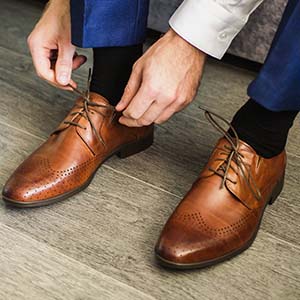Did you know that socks are the most ancient type of apparel humans still wear today? Long before anybody worried about color-coordinating with trousers or trainers, our Stone Age ancestors sported socks to protect their pads from pointy pebbles and other perils. Cave people used animal skins, ancient Greeks got creative with matted animal hair and Romans wrapped their peds in strips of leather or woven cloth. But after fashion progressed beyond the practical purpose of merely defending our tootsies, socks got elevated to a status symbol. In fact, during the Middle Ages, only nobility was allowed to wear certain types of socks (or ‘hose’ as they were called back in the day). London even had a Hose Police that made sure nobody wore socks above their station.
Another fun historical fact: men wore socks before women. In the 12th century, they became a staple in every nobleman’s wardrobe. Usually knee-length, men’s hose were often tied at the top with fancy embroidery. Over the next few centuries, the length varied from mid-calf to mid-thigh, and so did fashion, including bright colors, stripes and flashy decorations. Starting in the 16th century, knitting machines made socks more widely available, and the Industrial Revolution advanced production techniques even more.
The next major upgrade in socks didn’t arrive until the invention of nylon in 1938. The strength and elasticity of synthetics was a big step forward for socks.
Today, socks need to do more that save our feet from chills and blisters: they must complement our ensemble. So what makes the perfect sock? Read on to find out.
